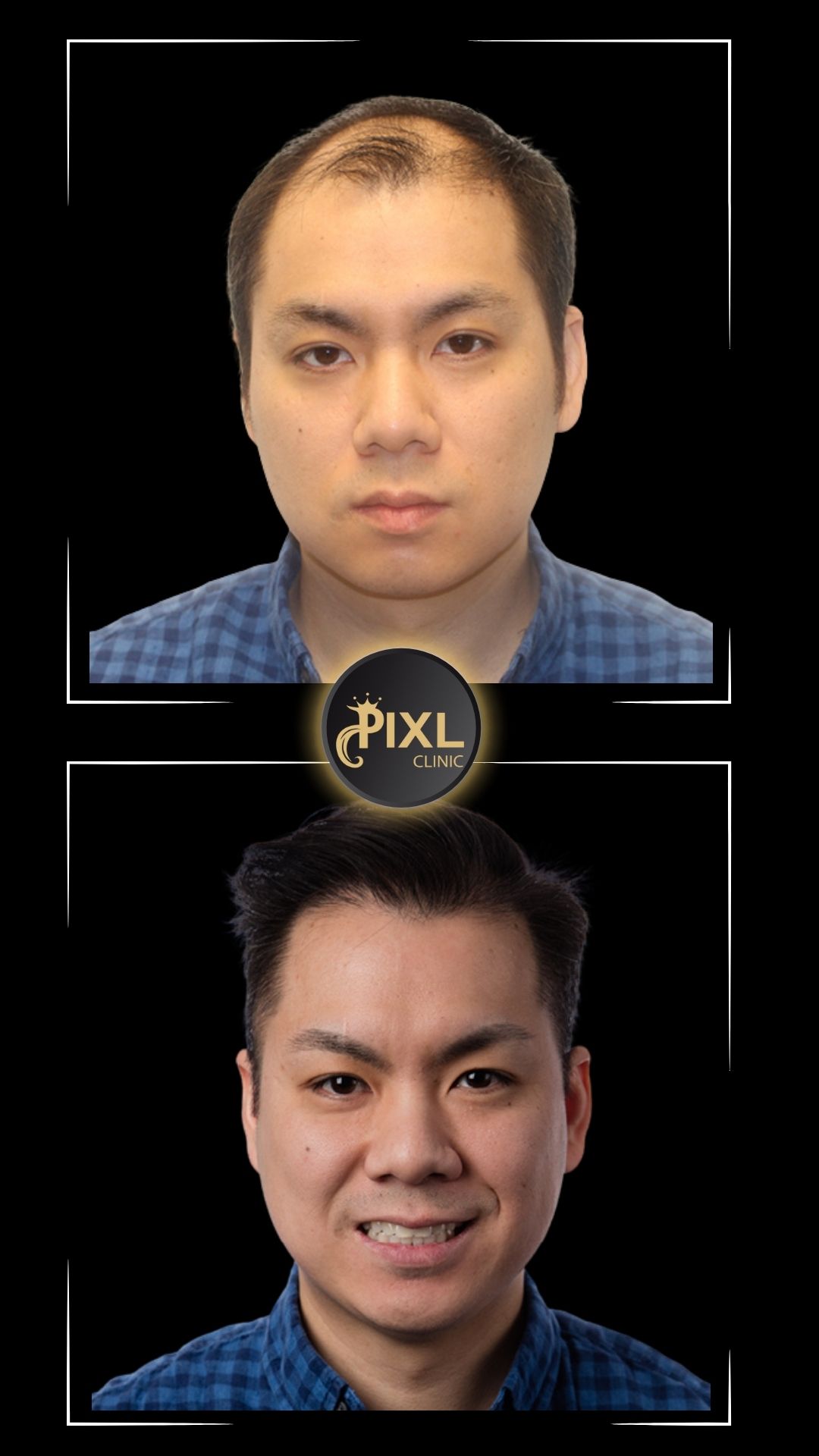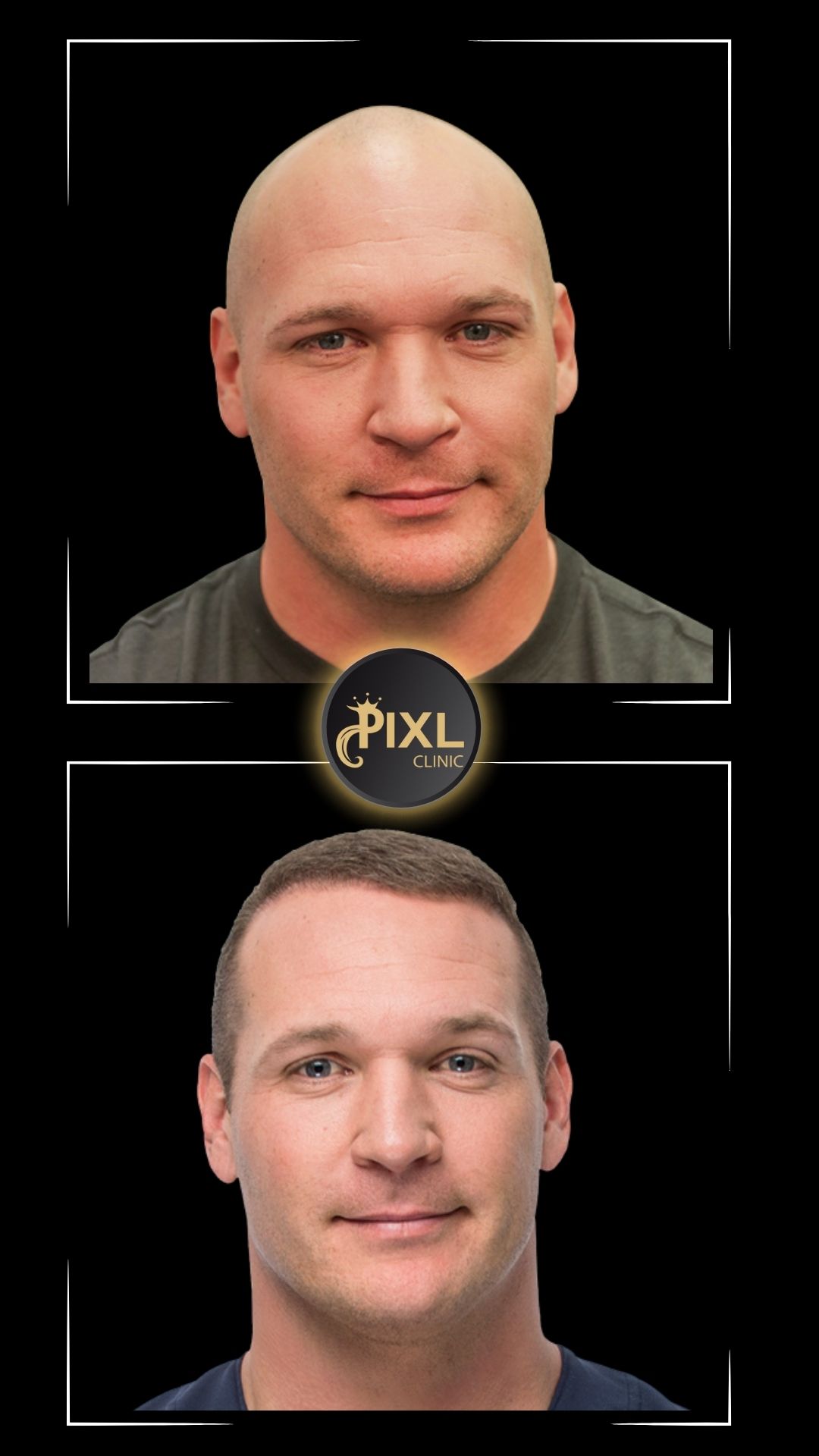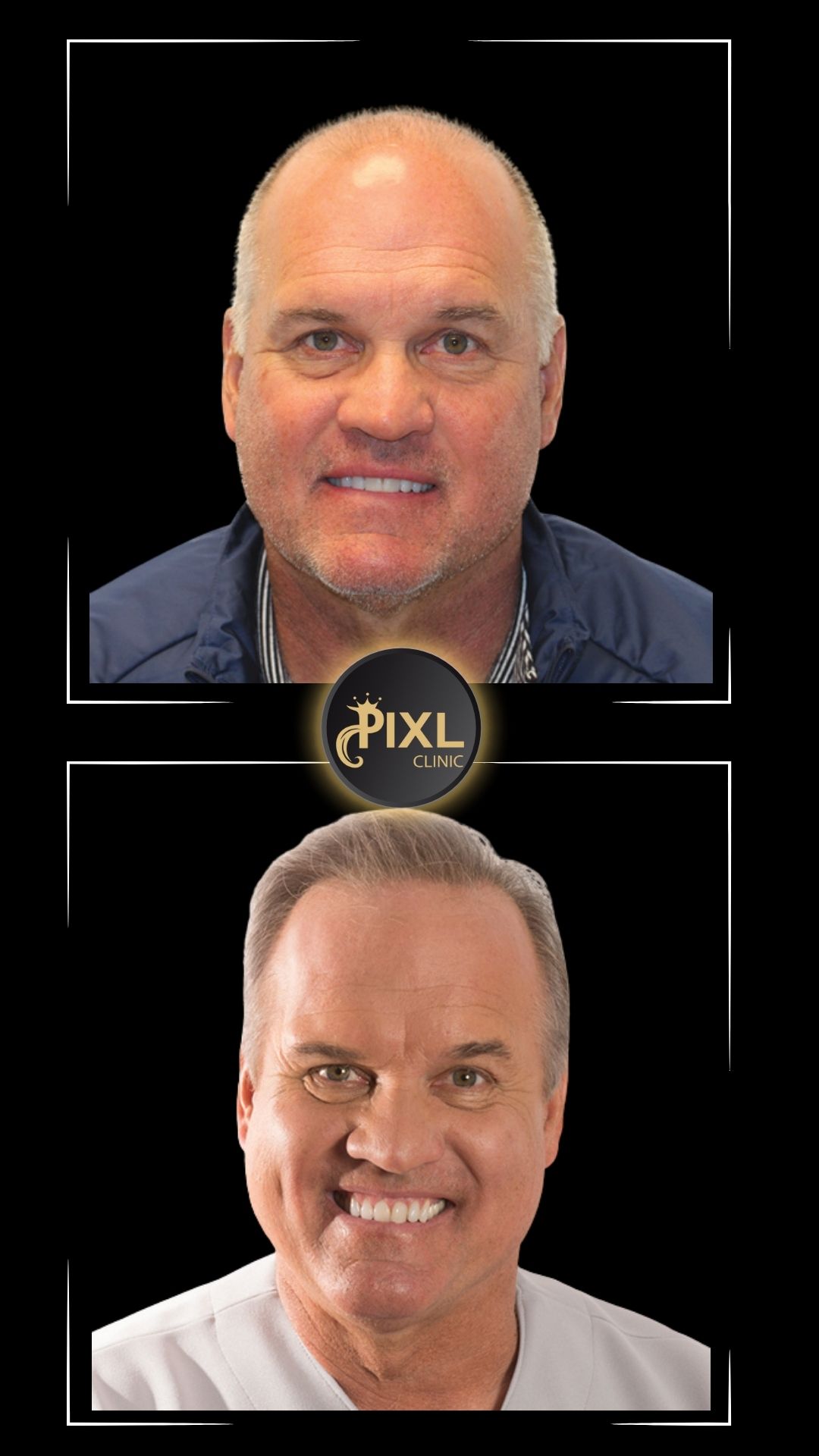Hair Transplant for Norwood Scale 4: What to Expect
The Norwood Scale is a widely used classification system for male pattern baldness, helping to identify the extent of hair loss and guide appropriate treatment options. If you’re at Norwood Scale 4, you’re experiencing significant hair loss, characterized by a receded hairline and noticeable thinning at the crown, but with a defined strip of hair connecting the sides and back of the scalp.
A hair transplant is one of the most effective solutions for restoring a fuller hairline and addressing baldness at this stage. In this blog, we’ll explore what Norwood Scale 4 hair loss means, the transplant options available, and what you can expect from the procedure.
Understanding Norwood Scale 4
At Norwood Scale 4:
- Hairline Recession: A deep “M” shape develops, with significant loss at the temples.
- Crown Thinning: The crown (vertex) exhibits noticeable thinning or a bald spot.
- Connecting Band: A thin band of hair connects the sides and back of the scalp, forming the donor area for a hair transplant.
This stage represents moderate hair loss, making it an ideal time to consider a hair transplant before the condition progresses further.

Is a Hair Transplant Suitable for Norwood Scale 4?
Yes! A hair transplant is highly effective for individuals at this stage of hair loss. However, success depends on several factors:
- Donor Hair Availability: A healthy donor area on the back and sides of the scalp is critical for achieving optimal results.
- Age and Hair Loss Progression: Surgeons consider your age and the likelihood of future hair loss to create a long-term plan.
- Realistic Expectations: A transplant can restore coverage to the hairline and crown, but density may need to be distributed strategically.
Types of Hair Transplant Procedures for Norwood Scale 4
Follicular Unit Extraction (FUE)
- Involves extracting individual hair follicles from the donor area.
- Leaves minimal scarring and has a quicker recovery time.
- Suitable for restoring both the hairline and crown.
Follicular Unit Transplantation (FUT)
- Involves harvesting a strip of scalp from the donor area and dissecting it into individual grafts.
- Allows for a higher number of grafts in a single session.
- Ideal for those needing extensive coverage in both the hairline and crown.
How Many Grafts Are Needed for Norwood Scale 4?
The number of grafts required depends on the extent of hair loss and the desired density. On average:
- Hairline Restoration: 1,500-2,000 grafts.
- Crown Coverage: 1,500-2,000 grafts.
- Total Grafts: 3,000-4,000 grafts may be needed for comprehensive coverage.
What to Expect During the Procedure
Consultation:
- Your surgeon will assess your hair loss, donor area, and goals to design a personalized treatment plan.
Preparation:
- The scalp is cleaned, and local anesthesia is applied to ensure comfort.
Graft Extraction:
- In FUE, individual follicles are extracted; in FUT, a strip is removed and dissected.
Site Creation:
- Tiny incisions are made in the recipient area to determine the angle, direction, and density of the transplanted hair.
Graft Implantation:
- The extracted follicles are carefully implanted into the recipient sites, following the natural hair growth pattern.
Recovery and Results
Immediate Post-Procedure:
- Mild redness, swelling, and scabbing in the recipient area are normal.
- Avoid touching or scratching the scalp to protect the grafts.
Initial Healing (First 2 Weeks):
- Scabs and redness subside.
- Transplanted hair may shed within the first few weeks—this is normal and temporary.
Hair Growth Timeline:
- 3-4 Months: New hair starts to grow.
- 6-12 Months: Significant improvement in density and coverage.
- 12-18 Months: Full results with thicker, natural-looking hair.
Challenges and Considerations
- Density Expectations: Achieving complete density may require multiple sessions, especially for extensive hair loss.
- Ongoing Hair Loss: Additional procedures or treatments (e.g., finasteride or minoxidil) may be necessary to maintain surrounding hair.
Tips for Long-Term Success
- Follow Aftercare Instructions: Proper scalp care is essential to protect the grafts and ensure healing.
- Consider Medications: Using FDA-approved treatments can slow or prevent further hair loss.
- Adopt a Healthy Lifestyle: Good nutrition and stress management support overall hair health.
A hair transplant is an excellent solution for Norwood Scale 4 hair loss, offering natural-looking results and long-lasting confidence. With advanced techniques like FUE and FUT, surgeons can restore your hairline, crown, and self-esteem.
If you’re considering a transplant, consult with a qualified hair restoration specialist to develop a personalized plan tailored to your goals and the progression of your hair loss. Take the first step toward regaining your hair and confidence today!
FAQ: Hair Transplant for Norwood Scale 4
What is Norwood Scale 4 hair loss?
Norwood Scale 4 involves:
- Hairline Recession: Noticeable hair loss at the temples, forming an “M” shape.
- Crown Thinning/Bald Spot: Significant hair loss or thinning at the crown.
- Connecting Band: A strip of hair connects the sides and back of the scalp, forming the donor area.
Is a hair transplant effective for Norwood Scale 4 hair loss?
Yes, hair transplants are highly effective for Norwood Scale 4. They can restore a receding hairline, cover the bald spot at the crown, and provide a natural appearance when performed by an experienced surgeon.
Which hair transplant techniques are best for Norwood Scale 4?
Both FUE (Follicular Unit Extraction) and FUT (Follicular Unit Transplantation) are suitable:
- FUE: Ideal for minimal scarring and quicker recovery. Grafts are extracted individually.
- FUT: Suitable for cases requiring a higher number of grafts. A strip of scalp is removed, and follicles are dissected.
How many grafts are needed for Norwood Scale 4?
On average:
- Hairline Restoration: 1,500-2,000 grafts.
- Crown Coverage: 1,500-2,000 grafts.
- Total Grafts: Approximately 3,000-4,000 grafts.
The exact number depends on the size of the balding areas and desired density.
How long does the procedure take?
A hair transplant for Norwood Scale 4 typically takes 6-10 hours, depending on the technique and the number of grafts.
What is the recovery time after a hair transplant?
- 1-2 Weeks: Scalp redness, swelling, and scabs heal.
- 2-4 Weeks: Transplanted hair sheds (normal part of the process).
- 3-6 Months: New hair begins to grow.
- 12-18 Months: Full results with thick, natural-looking hair.
Will the transplanted hair look natural?
Yes, modern hair transplant techniques ensure natural results by:
- Matching the angle, direction, and density of your existing hair.
- Creating a hairline that complements your facial structure.
Can a single session cover all the bald areas?
In most cases, a single session of 3,000-4,000 grafts can provide substantial coverage for both the hairline and crown. However, achieving very high density may require a second session.
Is the transplanted hair permanent?
Yes, transplanted hair is permanent. It comes from the donor area, which is resistant to DHT (the hormone responsible for hair loss).
Will untreated hair continue to fall out after a transplant?
Yes, untreated hair may continue to thin. To minimize further loss, your surgeon may recommend:
- Medications like finasteride or minoxidil.
- Ongoing hair care and monitoring.
How much does a hair transplant for Norwood Scale 4 cost?
The cost varies by location, clinic, and the number of grafts needed:
- FUE: $4,000-$15,000.
- FUT: $3,000-$12,000.
What are the risks of a hair transplant?
While rare, potential risks include:
- Infection or inflammation.
- Temporary shock loss (shedding of transplanted or existing hair).
- Uneven growth (which typically resolves over time).
How do I care for my scalp after a hair transplant?
- Avoid touching, scratching, or rubbing the scalp.
- Use a gentle shampoo as directed by your surgeon.
- Protect your scalp from direct sunlight and avoid strenuous activities for 1-2 weeks.
When can I return to normal activities?
- Light activities: Within 1-2 days.
- Strenuous exercise: After 7-10 days.
- Full routine: After 2 weeks or as advised by your surgeon.
How do I choose the right surgeon for a hair transplant?
- Look for surgeons with extensive experience in FUE and FUT techniques.
- Check before-and-after photos of previous patients.
- Read reviews and testimonials from trusted sources.
What if I need more density later?
If additional density is desired, you can undergo a second transplant session after the scalp has fully healed (typically 12-18 months later).
Are there non-surgical options for Norwood Scale 4 hair loss?
Non-surgical treatments include:
- Medications: Finasteride and minoxidil to slow further loss.
- PRP (Platelet-Rich Plasma) Therapy: Stimulates hair growth.
- Low-Level Laser Therapy (LLLT): Encourages hair regrowth.
While these can slow progression, they cannot fully restore lost hair like a transplant.
How long do the results of a hair transplant last?
Transplanted hair lasts a lifetime. However, ongoing treatment may be needed to maintain surrounding hair and prevent further loss.
Can I style my transplanted hair?
Yes! Once the transplanted hair grows, you can style, cut, and treat it like natural hair.
Why is Norwood Scale 4 a good stage for a hair transplant?
- There’s still a healthy donor area available for graft extraction.
- Restoring the hairline and crown at this stage can dramatically improve appearance and confidence.
- Early intervention can prevent the need for more extensive procedures later.

















